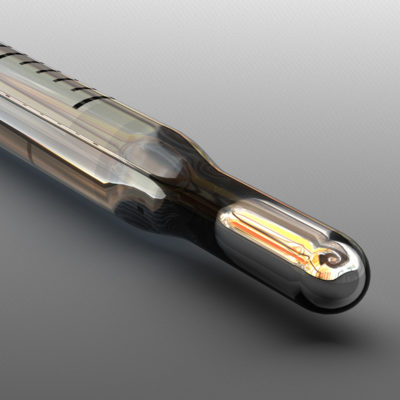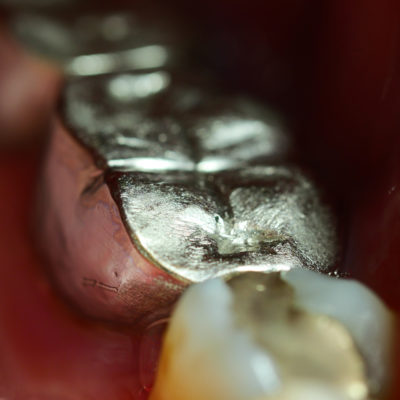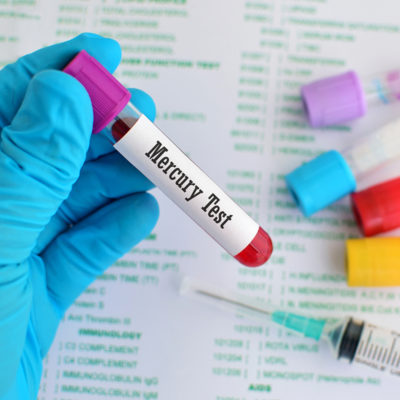
Is Mercury Poisoning Causing Your Anxiety and Depression?
Photo from gettyimages
Originally Posted On: Does Mercury Cause Anxiety? | Mercury and Depression (alternativetomeds.com)
Does Mercury Cause Anxiety, Depression, Insomnia & Other Symptoms?
Yes, it is possible according to studies published in the US-based Journal of Psychological Reports18 and also according to scientific studies from international sources. Brazilian researchers have concluded that chronic insomnia is characteristic of mercury exposure.14 In severe cases, such as workplace exposure in the fluorescent lamp industry, other symptoms can emerge such as tremors, uncontrollable periodic shaking, and muscle rigidity. Many psychiatric symptoms are documented as characteristic of toxic exposures, including OCD, excessive anger, anxiety, depression, impaired self-esteem, and other symptoms that could easily be misdiagnosed as a mental disorder.11,14,18 Though regulators carelessly assume that the amount and duration of mercury exposure is generally limited, medical studies estimate that the half life of mercury in the brain is about 20 years.8,16 The problem of toxic poisoning symptoms takes on a whole new level of concern, when one considers the potential risks of neurological damage over such a long time frame. Let’s take a closer look at the connections between mercury and your mental and physical health.
The History of Mercury in America
Commonly found in nature, mercury is a rare element found in the earth’s crust. It’s a naturally occurring metal that can take both a solid and liquid form. In the past, mercury was used in thermometers, temperature and pressure gauges, and even light switches in people’s homes. More recently, CFL light bulbs became touted as a way to save the environment, until the problem of mercury vapors proved them hazardous if they ever broke in the home, and difficult to dispose of safely.9
It wasn’t until studies were done, that the harmful effects of mercury exposure were more fully understood. Commercial use of mercury in mining, mirror manufacturing, and processing fur used in hat making was causing kidney failure, lung damage, and other potentially life-threatening conditions from daily exposure to mercury. With the first documented case of mercury poisoning back in 18651, it was revealed that mercury exposure can be lethal.
What Is Mercury Used For?
 Photo from gettyimages
Photo from gettyimages
Mercury is often used for its electrical properties when combined with other precious metals. In some parts of the world mercury is used in cosmetic products, and medicinal products. Many products to this day contain mercury.
You may find mercury in:2
- Batteries
- Vaccines 17
- Computer and smartphone screens
- Fluorescent lighting
- Disinfectants and preservatives
- Dental fillings
- Thermostats / thermometers
- Jewelry encased with glass
Mercury is still used in many of your common household items even today. Potentially harmful or toxic effects occur when these products crack or break, off-gas or spill, exposing anyone nearby to accidental poisoning. Mercury poisoning can happen from breathing in vapors, skin absorption, and accidental ingestion. Dentists and school children are two populations who have been documented as particularly at risk for mercury exposures.10,11
Mercury has three forms:3
1. Elemental Mercury
Elemental mercury can easily cross blood/brain and placental barriers and enter nursing mothers’ breast milk. It is a potent neurotoxin that can impact the central nervous system. A few of the neurological ramifications can be slurred speech, tremors, mood swings, excessive shyness, irritability, insomnia, loss of coordination, and more.
2. Inorganic Mercury
Inorganic mercury can enter the mouth and body through products such as disinfectants and fungicides. Inorganic mercury can harm the GI tract, as well as the kidneys and nervous system. Exposure to this compound can cause dermatitis and/or rashes, mood swings, memory loss, mental anxiety, and muscle weakness.
3. Organic Mercury
Organic mercury is the compound most often found in nature. Organic mercury goes through a biological bacterial process, converting it to an inorganic compound in rivers, streams and oceans, impacting all fish and sea life. Individuals who ingest fish regularly are exposed to this kind of mercury. According to a JAMA Pediatrics study, the FDA and EPA warned expecting mothers back in 2004 to avoid consumption of fish due to concerns about methylmercury. Then, in 2017, these recommendations were inexplicably reversed — pregnant and breast-feeding women, as well as children were encouraged to consume more fish. What hasn’t changed is that methylmercury is still a known neurotoxin that can cross into the blood/brain and placental barriers, and increase the risk of birth defects, neurological problems, and developmental delays.12
An increase in North American consumption of fish has caused a significant rise in higher levels of mercury in humans. Mercury emissions have been a long-time global issue depositing toxic fumes into the atmosphere and oceans and waterways. This has increased health issues in humans and has also drastically impacted wildlife. Virtually all fish around the world now have detectable levels of methylmercury, some more than others. Many fish with higher levels of mercury are the larger, predatory species, as their position in the food chain means they have consumed many smaller fish resulting in a bio-magnified rising toxicity level:
- King mackerel
- Bigeye tuna
- Marlin
- Orange roughy
- Chilean sea bass
The over-consumption of fish that are high in methylmercury can result in the development of severe or even fatal effects in your kidney, lungs, digestive tract, or cardiovascular system, as well as neurological impacts.
Lower mercury levels have been found in Arctic char, Atlantic mackerel, rainbow trout, salmon and sardines.13
Mercury in Dental Amalgams
 Photo from gettyimages
Photo from gettyimages
The amount of mercury utilized in the medical field, including dentistry, is concerning. With all the scientific evidence of the risks due to the exposure of mercury, should it be a treatment in oral care? To fix a cavity, a dentist drills the tooth to remove decayed enamel. The dentist then inserts amalgam to fill the cavity. The amalgam filling consists of liquid mercury mixed with other metals such as tin, silver, or copper. About half4 of all dental amalgam is elemental mercury by weight. There are a number of significant risks with dental amalgams5.
Elemental Mercury in Dental Fillings
Elemental mercury will slowly release levels of mercury as a vapor. This vapor can be breathed and make its way into the lungs, where it is absorbed and can migrate into other tissues and organs. Exposure to even low levels of elemental mercury is associated with adverse effects on the brain, kidneys, and elsewhere. Dental procedures are often performed on young, neurologically undeveloped children who are perhaps most susceptible to the mercury vapor’s neurotoxic effects. Studies confirm that certain populations should be protected from the risks of neurotoxin exposures in dentistry, or other sources, for example:
- Pregnant women
- Children 19,20
- Nursing mothers
- Individuals with pre-existing neurological disease
- People with impaired kidney function
- Women of child-bearing age
- People with known allergies to mercury and other heavy metals
Finding an alternative method or treatment to address a cavity or infected tooth should be considered, especially for those populations above. The FDA strongly advises individuals who are at high risk to try mercury-free restorations (fillings).
Mercury Poisoning and Anxiety and Depression
 Photo from gettyimages
Photo from gettyimages
Psychological health of an individual can be jeopardized from mercury exposure. Mercury is bioaccumulative and slow to be released from the body.16 Exposure to mercury for any given amount of time can cause headaches, anxiety, memory issues, mood swings, and more. It has been suggested that neurological damage from toxic mercury exposure could be permanent in young persons.20 These symptoms are commonly attributed to those with dental amalgams but have also been associated with those who have been exposed to mercury from food sources. Inhaling mercury vapor daily from a dental amalgam has reportedly caused frequent headaches, hair loss, muscle aches and pains, hormonal disturbances, a metallic taste in your mouth, tremors, psychosis, and more.
Experiencing one or more of these symptoms could signal some level of mercury poisoning. A visit to your dentist would be prudent to discuss the best course of action. In an emergency situation, feelings of suicide and depression, or physical ailments such as pain in the kidneys or abdomen, immediate medical attention by practitioners who are familiar with toxic adverse effects is strongly recommended.
Why Does Mercury Affect Your Mental Health?
Mercury damages neurons in the brain and other parts of the CNS. Mercury prohibits neurotransmitters such as dopamine, serotonin, and norepinephrine from binding to specific sites in the brain. Even more devastating is that many dentists themselves suffer from depression and suicide working with these materials daily — with dental professionals having had far more mercury in their systems6 than the general population. Some of the other contributing factors for mercury triggering depression and anxiety disorders are as follows:
- Promotes inflammation through the central nervous system
- Blocks mitochondrial respiration, which slows the ability to the produce energy
- Induces low blood folate levels (anemia, lack of folic acid in the blood)
- Inhibits acetylcholine (a neurotransmitter that regulates certain impulses, like those for aggression, suicide, or obsessive and/or compulsive behavior)
- Damages DNA, mitochondria, and cell membranes
- Mercury can create an environment where unhealthy bacteria, parasites, and yeasts (such as candida) can cultivate. Such pathogens could even compete with your body’s cells for nutrition.
The risk of toxic exposure on the patient from dental amalgam treatment is clear. However, dentists are melting down these metals sometimes daily, further exposing themselves to these symptoms, often more severely. Ranked the eleventh highest in suicide rates amongst other medical occupations, dentists sit through countless appointments handling a variety of metals toxic to humans. Please be aware that mercury is found in many food sources, including seafood and plants in locations where mercury pollution is present in the soil.
Holistic Dentistry
To avoid further toxic exposure, seek out a holistic dentist. Holistic dentistry is an alternative form of dentistry that understands how oral health affects the body as a whole. It focuses on treating the root issues, including nutrition for oral health and not just the immediate pain or ache. Holistic dentistry takes into account how physical, emotional, and spiritual health are all related, thus, they focus on more than just oral care alone.
What Are the Differences Between Holistic Dentistry and Traditional Dentistry?
Holistic dentists may treat the jaw, teeth, gums, and areas of the head and neck. Utilizing a variety of treatments, such as herbology, nutrition education, aromatherapy, Ayurveda, and others, holistic dentistry focuses on the full spectrum of care. While still performing routine cleanings, flossing, and fillings, they avoid some potentially harmful practices found in traditional dentistry.
For example, traditional dentistry might treat tooth decay with mercury amalgams and fluoride treatments, whereas a holistic dentist may fill the cavity with non-toxic material, but may also test for diabetes, or recommend exercise aimed toward improving cardiovascular health because of the links between oral health and heart health. Holistic dentists reject the use of fluoride, because of studies showing fluoride reduces children’s IQ, weakens bones, increases risk of fractures, can cause white spots on teeth, and may harm the thyroid.
Holistic dentists apply techniques like:
- Nutritional care to treat gum disease or tooth decay
- The use of biocompatible dental materials as opposed to toxic dental amalgams
- Digital x-rays rather than traditional dental x-ray machines 7
Holistic dentistry, also commonly known as integrative dentistry, focuses on oral health problems as they relate to total body health.
The Benefits of Holistic Oral Care
If you prefer having a clear understanding and knowledge of what you are placing in your body, then a holistic dentist might be a great option for you. Focusing on natural remedies, avoiding mercury or fluoride, utilizing biocompatible materials, and employing alternative therapies, are just a few snapshots of the full spectrum of care they can provide for their patients. Whole heart treatment is the end goal for any doctor who specializes in holistic medicine.
While the FDA (Food and Drug Administration) approves the use of mercury in many products, the approval of dental amalgams to this day is baffling. Alternatives like mercury-free fillings, cleaner foods, and using products free from neurotoxins can provide healthier choices.
Still Have Questions About Mercury?
 Photo from gettyimages
Photo from gettyimages
Understanding the possible ramifications of utilizing mercury-based products can mean the difference in many serious neurocognitive and physiological issues. For over a century, mercury has been used in profitable industries marketed to the general public as daily household items and even applied in dental and medical treatments for decades.
If you are worried that mercury may be an issue related to anxiety, depression, insomnia, OCD or other unwanted symptoms, please feel free to reach out and speak with one of our representatives. We specialize in helping people detox their body from harmful neurotoxins. Reach out anytime to learn more and see if Alternative to Meds Center can help you with your health concerns.
1 (800) 301-3753 for Questions About Mercury
1. https://www.ncbi.nlm.nih.gov/pmc/articles/PMC2920108/
3. https://www.dec.ny.gov/chemical/28716.html
4. https://www.fda.gov/medical-devices/dental-devices/dental-amalgam-fillings
5. https://pubmed.ncbi.nlm.nih.gov/26581313/
6. https://www.ncbi.nlm.nih.gov/pmc/articles/PMC5355537/
7. https://pubmed.ncbi.nlm.nih.gov/26644147/
8. https://www.ncbi.nlm.nih.gov/pmc/articles/PMC3514464/
9. https://pubmed.ncbi.nlm.nih.gov/22188528/
10. https://pubmed.ncbi.nlm.nih.gov/8784840/
11. https://pubmed.ncbi.nlm.nih.gov/22344215/
12. https://www.ncbi.nlm.nih.gov/pmc/articles/PMC7346675/
13. https://www.ncbi.nlm.nih.gov/pmc/articles/PMC3024155/
14. https://www.scielo.br/j/anp/a/qvbYFwvPxWGrXYDKXRJfPQJ/?lang=en
15. https://www.ncbi.nlm.nih.gov/books/NBK553162/
16. https://www.ncbi.nlm.nih.gov/pmc/articles/PMC3988285/
17. https://www.ncbi.nlm.nih.gov/pmc/articles/PMC4922646/
18. https://pubmed.ncbi.nlm.nih.gov/8153237/
19. https://www.ncbi.nlm.nih.gov/pmc/articles/PMC3096006/
20. https://www.jpeds.com/article/S0022-3476(03)00779-0/fulltext
